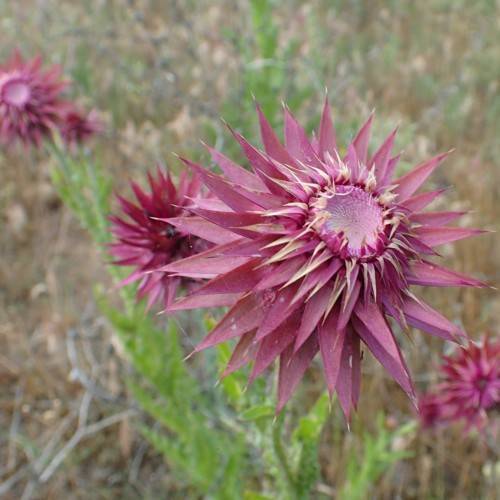
Smooth-Leaved Nodding Thistle
Carduus nutans subsp. leiophyllus
Watering:
Average
Hardiness Zone:
Flowers:
Flowers
Sun:
Sun, Partial Shade
Soil:
Clay, Sand
Fruits:
Fruits Ready In Fall
Leaf:
Yes
Growth Rate:
High
Invasive:
Yes
Care Level:
Medium
watering
Nodding thistle does best with regular, deep and infrequent watering. Water the plant when the top 2 inches of soil is dry. Soak the soil deeply when you water, until water runs out of the bottom of the pot. Allow the plant to drain well before placing it back where it was. Avoid frequent, light watering, which can encourage shallow roots and may not get water far enough down to the plant's root system.
sunlight
Nodding Thistle prefers full sun and should be grown in a location that gets at least 8 to 10 hours of sunlight per day. The plant will tolerate some shade, but is much less likely to bloom and benefits from full sun. It blooms best when the sun is strongest, usually in the middle of the day. The plant should be watered deeply once a week, allowing a few days for the soil to dry out between waterings.
pruning
Nodding Thistle (Carduus nutans) should be pruned in late winter or early spring before new growth begins. Pruning should be limited to removing dead or damaged stems and any flower heads that have already set seed. This ensures that the new growth is young and vigorous, and the plant does not put energy into developing seed during the growing season. Pruning in late summer or fall should be avoided to prevent the plant from putting energy into new stem growth late in the growing season when it is more vulnerable to frost damage.
